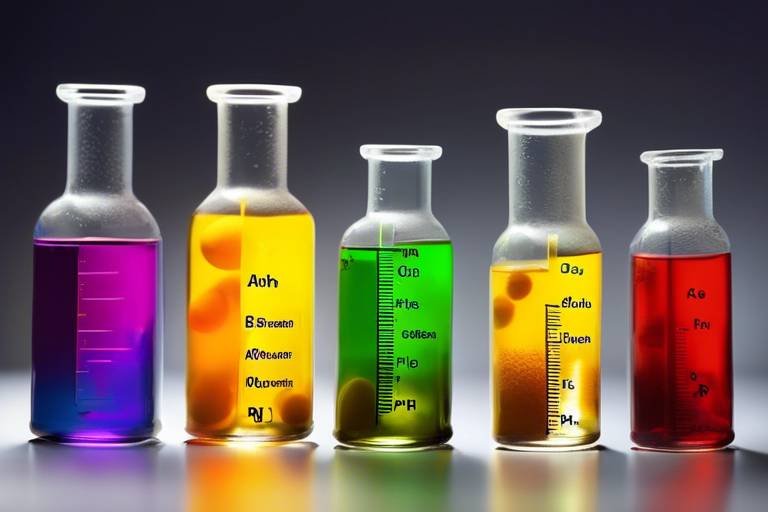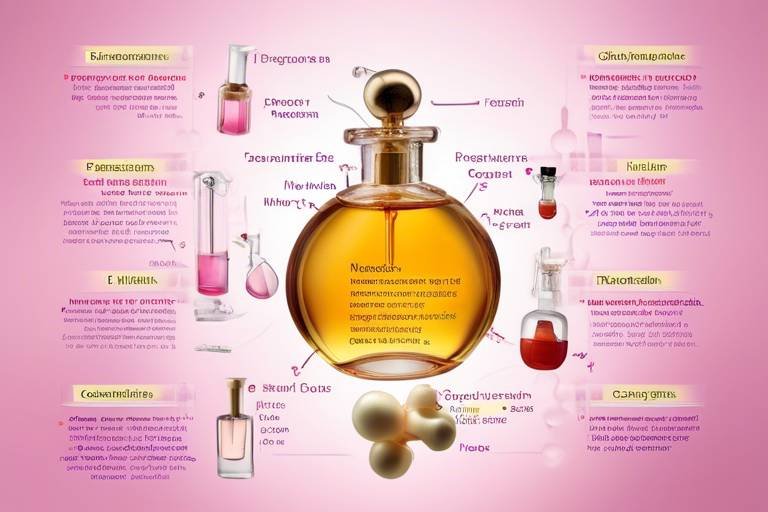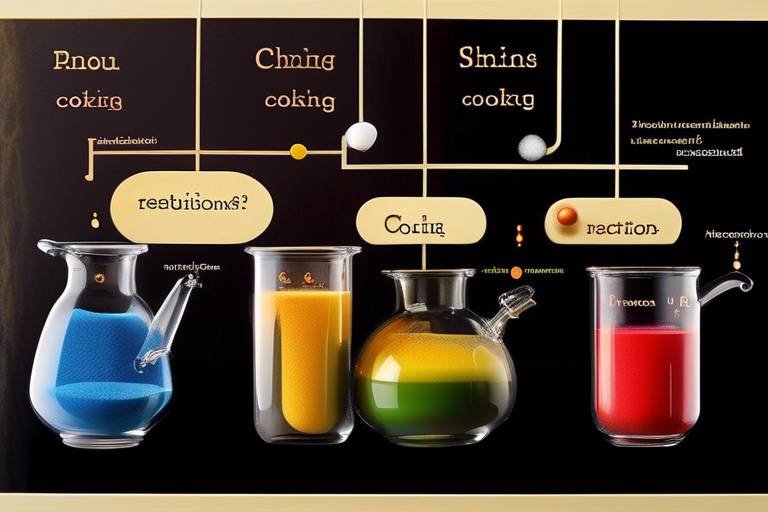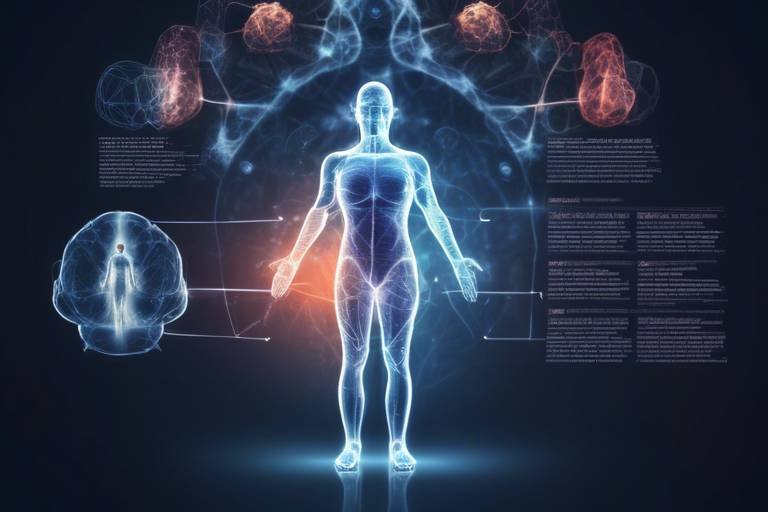The Chemistry of pH - Understanding Acidity in Everyday Life
Have you ever wondered why a lemon makes your mouth pucker or why baking soda can neutralize that same lemon juice? The answer lies in the fascinating world of pH. This article explores the concept of pH, its significance in chemistry, and its impact on various aspects of daily life, including food, health, and the environment. Understanding pH can be like having a secret key that unlocks the mysteries of many everyday phenomena, from the taste of your favorite foods to the health of our ecosystems.
pH is a measure of how acidic or basic a solution is. It plays a crucial role in chemical reactions and biological processes, influencing everything from soil health to human physiology. The term pH stands for "potential of hydrogen," which indicates the concentration of hydrogen ions in a solution. The more hydrogen ions present, the more acidic the solution becomes. Conversely, fewer hydrogen ions indicate a more basic (or alkaline) solution. This simple yet powerful concept is essential for grasping the behavior of different substances we encounter in our daily lives.
The pH scale ranges from 0 to 14, with lower values indicating acidity and higher values indicating alkalinity. A pH of 7 is considered neutral, which is the pH of pure water. Understanding this scale is essential for grasping the behavior of different substances. For example, a solution with a pH of 1 is extremely acidic (like battery acid), while a pH of 13 is very basic (like bleach). This scale helps us categorize substances and predict how they will react with one another in various contexts.
When we talk about pH, we often mention acids and bases. Acids are substances that donate protons (H+ ions), while bases accept them. This fundamental distinction is vital for understanding chemical reactions and the nature of various compounds encountered in everyday life. For instance, when you mix vinegar (an acid) with baking soda (a base), they react to form carbon dioxide gas, which creates that delightful fizz. This reaction is not just fun; it demonstrates how acids and bases interact based on their pH levels.
Many common substances, such as vinegar and citrus fruits, are acidic. Recognizing these acids helps us understand their roles in cooking, cleaning, and health. For example:
- Vinegar: Used in salad dressings and pickling, it adds a tangy flavor and acts as a preservative.
- Citrus Fruits: Oranges and lemons are rich in citric acid, making them refreshing and zesty.
These everyday acids not only enhance our meals but also play crucial roles in various chemical processes around us.
Bases, like baking soda and soap, are prevalent in households. Their basic properties make them useful for various applications, from cooking to personal care. For instance, baking soda is often used in baking to help dough rise, while soap helps to remove dirt and grease due to its ability to neutralize acids. Understanding these substances can empower you to use them more effectively in your daily routines.
pH levels are critical in biological systems, influencing enzyme activity and cellular functions. For example, human blood maintains a tightly regulated pH of around 7.4. Deviations from this range can lead to serious health issues. Just think about it: if our body's pH balance is off, it’s like trying to drive a car with a flat tire—it just doesn’t work properly. Maintaining proper pH is essential for overall health and well-being, affecting everything from digestion to metabolic processes.
Various methods exist for measuring pH, including pH meters and indicator strips. Understanding these methods allows for accurate assessment of acidity in different contexts. pH meters provide precise readings and are commonly used in laboratories, while indicator strips change color based on the pH level of a solution, offering a quick and easy way to gauge acidity. Knowing how to measure pH can be particularly useful in gardening, cooking, and even swimming pool maintenance.
pH measurement is crucial in agriculture, medicine, and environmental science. Each application highlights the importance of pH in maintaining balance and health in various systems. For instance, in agriculture, soil pH affects nutrient availability for plants. In medicine, monitoring pH levels can help diagnose and manage health conditions. In environmental science, assessing the pH of water bodies helps evaluate pollution and ecosystem health.
The pH of natural water bodies affects aquatic life and ecosystem health. For example, many fish species thrive in water with a pH between 6.5 and 8.5. Monitoring pH levels helps in assessing pollution and maintaining biodiversity in our environment. When pH levels deviate significantly due to acid rain or industrial runoff, it can lead to detrimental effects on aquatic ecosystems, demonstrating the interconnectedness of pH with our planet's health.
- What is a neutral pH? A neutral pH is 7, which means the solution is neither acidic nor basic.
- How can I test the pH of my soil? You can use pH test kits available at garden centers or send samples to a lab for analysis.
- Why is pH important in swimming pools? Maintaining the correct pH level in swimming pools is essential for comfort and to prevent damage to equipment.

[What is pH?]
pH, which stands for "potential of hydrogen," is a crucial concept in both chemistry and biology. It serves as a measure of how acidic or basic a solution is, and understanding it is essential for grasping the behavior of various substances we encounter daily. The pH scale ranges from 0 to 14, where a value of 7 is considered neutral. Values below 7 indicate acidity, while those above 7 indicate alkalinity. This simple yet powerful scale plays a vital role in numerous chemical reactions and biological processes, influencing everything from the taste of our food to the health of our ecosystems.
To put it in perspective, think of pH as a thermometer for acidity. Just as a thermometer tells you how hot or cold something is, the pH scale informs you whether a solution is sour like lemon juice or soapy like baking soda. For instance, lemon juice has a pH of about 2, making it quite acidic, while baking soda sits around a pH of 9, indicating its basic nature. This balance of acidity and alkalinity is not only important for our culinary experiences but also for biological systems. For example, our stomachs are highly acidic, with a pH around 1.5 to 3.5, which is essential for digesting food and killing harmful bacteria.
The significance of pH extends beyond the kitchen and into our health. Our bodies maintain a tightly regulated pH level in the blood, typically around 7.4. Deviations from this range can lead to serious health issues. For example, acidosis occurs when the blood pH drops below 7.35, while alkalosis happens when it rises above 7.45. Both conditions can disrupt normal physiological functions, illustrating just how critical pH is to our overall well-being.
In addition, pH plays a significant role in environmental science. The acidity of rainwater, for example, can have profound effects on plant life and aquatic ecosystems. Acid rain, which has a pH lower than 5.6, can harm forests and lakes, affecting biodiversity and ecosystem health. Thus, understanding pH is not just an academic exercise—it has real-world implications that affect our food, health, and environment.
In summary, pH is more than just a number; it's a fundamental aspect of our daily lives that influences everything from the food we eat to the ecosystems we depend on. By grasping the concept of pH, we can better appreciate the delicate balance that sustains life and the intricate chemical processes that occur around us.

[The pH Scale Explained]
The pH scale is a fascinating tool that helps us understand the acidity or alkalinity of various substances we encounter every day. Ranging from 0 to 14, this scale provides a clear representation of how acidic or basic a solution is. A pH of 7 is considered neutral, which means it is neither acidic nor basic. Imagine it as a seesaw: on one side, you have acids, and on the other, bases. When the seesaw is perfectly balanced, that’s where you find neutral solutions.
To dive deeper into the scale, let’s break it down:
- Acidic Solutions: A pH value less than 7 indicates acidity. The lower the number, the stronger the acid. For instance, lemon juice has a pH of around 2, making it quite acidic.
- Neutral Solutions: A pH of exactly 7 is neutral, like pure water. It’s the perfect balance between acids and bases.
- Basic Solutions: A pH greater than 7 indicates alkalinity. The higher the number, the stronger the base. For example, baking soda has a pH of about 9, which categorizes it as a mild base.
Understanding the pH scale is essential for several reasons. First, it plays a critical role in chemical reactions, influencing how substances interact with each other. For instance, when you mix an acid with a base, they react to form water and a salt, a process known as neutralization. This reaction is not just a laboratory phenomenon; it occurs in our bodies as well. Your stomach, for example, produces hydrochloric acid (pH around 1.5 to 3.5) to aid digestion, demonstrating how vital pH is to our health.
Moreover, the pH scale is not just about chemistry; it also impacts our daily lives in various ways. In gardening, for example, the pH of the soil can determine which plants thrive. Most plants prefer a slightly acidic to neutral pH (around 6 to 7). If the soil is too acidic or too alkaline, it can hinder plant growth, affecting food production and biodiversity.
To visualize the pH scale better, here's a simple table:
| pH Value | Nature | Examples |
|---|---|---|
| 0-6.9 | Acidic | Lemon juice, vinegar, stomach acid |
| 7 | Neutral | Pure water |
| 7.1-14 | Basic | Baking soda, soap, bleach |
In summary, the pH scale is more than just numbers; it's a critical aspect of chemistry that influences everything from our health to our environment. By understanding how it works, we can make better choices in our daily lives, whether it’s in the kitchen, the garden, or when taking care of our health.
What does a pH of 0 mean?
A pH of 0 indicates a highly acidic solution, such as battery acid, which can be very corrosive.
Can pH levels change?
Yes, pH levels can change due to various factors, including temperature, concentration of solutes, and chemical reactions.
How can I measure pH at home?
You can use pH test strips or a digital pH meter, both of which are widely available and easy to use.

[Acids and Bases]
Understanding the concepts of acids and bases is fundamental to grasping the larger picture of chemistry and its applications in our daily lives. At the heart of this understanding lies the notion that acids are substances that donate protons (H+ ions) in a solution, whereas bases are those that accept protons. This simple yet profound distinction is what drives a myriad of chemical reactions, from the food we eat to the products we use for cleaning and personal care.
To illustrate this, consider a classic example: when you mix vinegar (an acid) with baking soda (a base), a bubbling reaction occurs. This fizzing is a result of the acid donating protons to the base, leading to the formation of carbon dioxide gas. This reaction not only showcases the interaction between acids and bases but also serves practical purposes, such as in baking or even in creating homemade cleaning solutions.
But acids and bases are not just confined to the kitchen; they are everywhere! For instance, the hydrochloric acid in your stomach helps digest food, while the sodium hydroxide found in many household cleaners helps to break down grease and grime. The versatility of acids and bases makes them essential in various fields, including medicine, agriculture, and even environmental science.
Below is a table that summarizes some common acids and bases found in our everyday lives, along with their typical uses:
| Substance | Type | Common Uses |
|---|---|---|
| Vinegar | Acid | Cooking, cleaning |
| Citrus fruits (e.g., lemons) | Acid | Flavoring, health benefits |
| Baking soda | Base | Baking, cleaning |
| Soap | Base | Personal care, cleaning |
The interplay between acids and bases is not just a textbook concept; it is a reality that shapes our interactions with the world. So next time you squeeze a lemon on your fish or use baking soda to freshen your fridge, remember that you are engaging in a dance of protons, a fundamental aspect of chemistry that influences so much of our daily existence.
In conclusion, the relationship between acids and bases is a cornerstone of chemistry that extends far beyond the laboratory. Their presence in our food, cleaning products, and even our bodies highlights their significance in maintaining balance and health in our everyday lives.
- What are the most common acids found in food? Common acids include acetic acid (vinegar), citric acid (citrus fruits), and lactic acid (dairy products).
- How do acids and bases affect our health? They play crucial roles in digestion, maintaining pH balance in the body, and even in the effectiveness of medications.
- Can I test the acidity or alkalinity of a substance at home? Yes! You can use pH strips or natural indicators like red cabbage juice to test the pH of various substances.

[Common Acids in Daily Life]
When you think about acids, you might picture something dangerous or corrosive, but the truth is that many common acids are part of our everyday lives, often hiding in plain sight. These acids play crucial roles in cooking, cleaning, and even maintaining our health. For instance, acetic acid is the main component of vinegar, which is not only a staple in kitchens worldwide but also a powerful cleaning agent. Imagine whipping up a salad dressing or using it to remove stubborn stains; it's a versatile acid that we often take for granted.
Another widely recognized acid is citric acid, found in citrus fruits like lemons, limes, and oranges. This acid not only adds a zesty flavor to our drinks and dishes but also acts as a natural preservative. It’s fascinating how something so simple can enhance the taste of our food while also helping to keep it fresh. The tangy taste of citrus is a reminder of how acids can be both delightful and functional.
Moreover, lactic acid is another common acid that often goes unnoticed. It’s produced in our muscles during exercise, leading to that familiar burning sensation when we push ourselves too hard. But lactic acid isn’t just a byproduct of physical activity; it’s also present in fermented foods like yogurt and sauerkraut, contributing to their unique flavors and health benefits. This dual role of lactic acid highlights how acids are intertwined with both our physical health and our culinary experiences.
In addition to these, carbonic acid can be found in carbonated beverages. When you pop open a soda, that fizzy sensation is thanks to the carbonic acid formed when carbon dioxide is dissolved in water. It’s a fun example of how acids can add excitement to our drinks, making them more enjoyable. However, it’s essential to remember that while these acids are safe in moderation, excessive consumption can lead to health issues like tooth enamel erosion.
Overall, understanding these common acids in our daily lives not only enhances our appreciation for the food we eat and the products we use but also empowers us to make informed choices. Whether we’re cooking a meal, cleaning our homes, or taking care of our bodies, these acids are quietly working behind the scenes, influencing our experiences in significant ways.

[Common Bases in Daily Life]
When we think about bases, the first thing that might come to mind is a bottle of cleaning solution or perhaps a box of baking soda sitting in your pantry. Bases are all around us, playing a vital role in our daily lives, often without us even realizing it. These substances, characterized by their ability to accept protons or donate hydroxide ions, are essential in various applications, from cooking to personal care and even in our cleaning routines.
One of the most common bases that many people use is baking soda (sodium bicarbonate). This versatile compound is not just a leavening agent in baking; it also works wonders in neutralizing odors and unclogging drains. Did you know that a simple mixture of baking soda and vinegar can create a fizzy reaction that helps clear out stubborn clogs? It’s like a mini science experiment right in your kitchen!
Another household base that deserves a mention is soap. Soap works by breaking down oils and fats, allowing them to be washed away with water. The basic nature of soap is what helps it to effectively cleanse surfaces and skin. Just think about it: when you wash your hands, the soap molecules interact with both water and oil, making it easier to rinse away dirt and germs. It's a simple yet effective example of how bases contribute to our hygiene.
In addition to these, there are other common bases that often find their way into our lives:
- Ammonia - Found in many cleaning products, ammonia is a powerful base that can cut through grease and grime.
- Calcium carbonate - This is commonly found in antacids, helping to neutralize stomach acid and relieve heartburn.
- Potassium hydroxide - Often used in soap making and as a cleaning agent, it’s a strong base that requires careful handling.
Understanding these common bases is not just about knowing their names; it’s about appreciating their roles in our everyday activities. From baking delicious treats to ensuring our homes are clean and safe, bases are unsung heroes that help maintain balance in our daily routines.
As we explore the fascinating world of chemistry, it's clear that bases play a crucial role in our lives. Next time you reach for that box of baking soda or a bottle of soap, remember that these simple substances are part of a larger chemical dance that keeps our world functioning smoothly.
- What is the difference between an acid and a base?
Acids donate protons, while bases accept them. This fundamental difference defines their chemical behavior. - Are all bases safe to use?
No, not all bases are safe. Some, like sodium hydroxide, can be caustic and require careful handling. - How can I neutralize an acid?
You can neutralize an acid by adding a base, such as baking soda, which reacts with the acid to form water and a salt. - What household items are acidic?
Common acidic household items include vinegar, lemon juice, and certain soft drinks.

[Importance of pH in Biology]
The significance of pH in biology cannot be overstated. It acts as a silent yet powerful player in the intricate dance of life, influencing everything from enzyme activity to the health of cells. Imagine pH as the Goldilocks zone for biological systems—too acidic or too alkaline, and things can go awry. For instance, our bodies thrive at a pH level of around 7.4, which is slightly alkaline. This balance is crucial for various physiological processes, including metabolism and the function of our organs.
One of the most critical areas where pH plays a role is in enzyme activity. Enzymes are biological catalysts that speed up chemical reactions in our bodies. Each enzyme has an optimal pH range where it functions best. For example, the enzyme pepsin, which aids in digestion, works optimally in the highly acidic environment of the stomach (around pH 1.5 to 3.5). On the other hand, enzymes in the intestines prefer a more neutral to slightly alkaline pH. This variation illustrates how pH is not just a number; it’s a crucial factor in ensuring that our biological processes run smoothly.
Moreover, pH levels influence cellular functions. Cells rely on a stable pH to maintain their shape and function. If the pH strays too far from the norm, it can lead to cellular stress or even death. For example, acidosis (a condition where the body fluids become too acidic) can lead to fatigue, confusion, and in severe cases, can be life-threatening. Conversely, alkalosis (when the body fluids are too alkaline) can cause muscle twitching and spasms. These conditions highlight the delicate balance that pH maintains in our bodies.
In addition to individual health, pH is vital for ecosystem health. For instance, aquatic life is highly sensitive to changes in pH levels. Many fish and aquatic organisms thrive in a narrow pH range, typically between 6.5 and 8.5. If the pH of a water body drops due to pollution or acid rain, it can have devastating effects on these organisms, leading to a decline in biodiversity. This interconnectedness underscores the importance of monitoring and maintaining appropriate pH levels in our environments.
To summarize, the importance of pH in biology is multifaceted:
- Enzyme Activity: Optimal pH levels are essential for enzymes to function effectively.
- Cellular Function: Stable pH is crucial for maintaining cell health and function.
- Ecosystem Health: Aquatic life and biodiversity depend on balanced pH levels.
Understanding pH is not just an academic exercise; it has real-world implications for our health and the environment. By maintaining optimal pH levels, we can ensure that biological systems function harmoniously, leading to better health outcomes for individuals and a healthier planet overall.
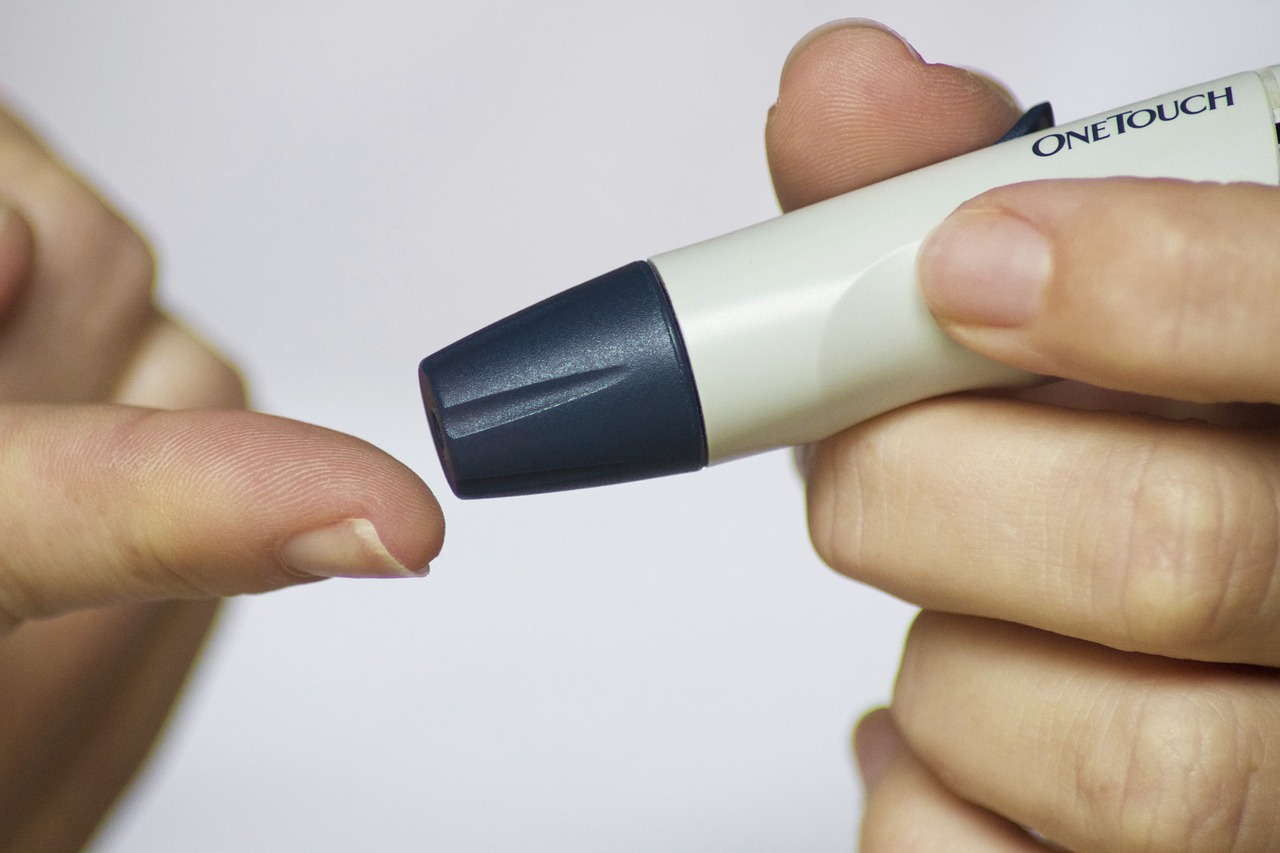
[Measuring pH]
Measuring pH is an essential practice in various fields, from agriculture to healthcare. Understanding how acidic or basic a solution is can provide valuable insights into its properties and potential applications. There are several methods available for measuring pH, each with its own advantages and limitations. The most common techniques include using pH meters and indicator strips.
A pH meter is an electronic device that provides a precise measurement of pH levels. It consists of a probe that is sensitive to hydrogen ion concentration. When the probe is immersed in a solution, it generates a voltage that is converted into a pH value. This method is highly accurate and is often used in laboratory settings. However, it requires calibration and regular maintenance to ensure reliable results.
On the other hand, indicator strips are a more accessible and user-friendly option for measuring pH. These strips are coated with pH-sensitive dyes that change color based on the acidity or alkalinity of the solution. To use them, you simply dip the strip into the liquid and compare the resulting color to a reference chart. While this method is less precise than using a pH meter, it is quick and convenient for everyday use, such as testing the acidity of soil or pool water.
In addition to these methods, there are also litmus papers, which are a type of indicator strip that changes color in response to pH changes. Litmus paper is particularly popular in educational settings, as it provides a simple way to demonstrate the concept of acidity and alkalinity. However, it only indicates whether a solution is acidic or basic without providing an exact pH value.
Here’s a brief comparison of the different methods used for measuring pH:
| Method | Accuracy | Ease of Use | Cost |
|---|---|---|---|
| pH Meter | High | Moderate | High |
| Indicator Strips | Moderate | Easy | Low |
| Litmus Paper | Low | Very Easy | Very Low |
Understanding how to measure pH is crucial, especially when considering its applications. For instance, in agriculture, farmers often test soil pH to determine nutrient availability and optimize crop production. In the medical field, pH levels in bodily fluids can indicate health issues, guiding healthcare providers in diagnosis and treatment. Similarly, environmental scientists monitor pH levels in water bodies to assess pollution and its effects on aquatic life.
In conclusion, measuring pH is not just a scientific endeavor; it is a practical skill that enhances our understanding of the world around us. Whether you’re a gardener, a healthcare professional, or simply someone curious about chemistry, knowing how to measure pH can open doors to new insights and better decisions.
- What is the ideal pH level for drinking water? The ideal pH level for drinking water is typically between 6.5 and 8.5.
- How does pH affect plant growth? Different plants thrive at different pH levels; most prefer a slightly acidic to neutral pH (around 6.0 to 7.0).
- Can pH levels change over time? Yes, pH levels can fluctuate due to various factors, including the addition of fertilizers, rainfall, and decomposition of organic matter.

[Applications of pH Measurement]
Understanding and measuring pH is not just an academic exercise; it has real-world applications that impact our daily lives in profound ways. From agriculture to healthcare, the implications of pH measurement can be seen everywhere. For instance, in the world of agriculture, farmers rely on pH measurements to determine soil health and nutrient availability. The right pH level ensures that plants can absorb essential nutrients effectively. If the soil is too acidic or too alkaline, it can lead to nutrient deficiencies, ultimately affecting crop yields. This is why many farmers regularly test their soil's pH, often using simple kits or more sophisticated pH meters.
In the realm of medicine, pH measurement is equally critical. Our bodies function optimally within a narrow pH range, particularly in our blood, which is typically around 7.4. Deviations from this range can indicate underlying health issues. For example, a blood pH that is too low (acidosis) or too high (alkalosis) can lead to serious health complications. Healthcare professionals often measure pH levels in various bodily fluids to diagnose conditions and monitor patient health. This is crucial in settings such as intensive care units, where maintaining proper pH balance can mean the difference between life and death.
Moreover, pH measurement plays a vital role in environmental science. Water quality is a significant indicator of ecosystem health, and pH levels can reveal a lot about the water's condition. For instance, freshwater bodies with a pH below 6 can be harmful to aquatic life, leading to decreased biodiversity. Environmentalists and researchers regularly monitor the pH of rivers, lakes, and oceans to assess pollution levels and the overall health of ecosystems. This data helps in crafting policies aimed at protecting our natural resources.
To give you a better understanding of how pH measurement is applied across these different fields, here’s a quick overview:
| Field | Application |
|---|---|
| Agriculture | Soil health assessment and nutrient availability |
| Medicine | Monitoring blood pH for health diagnostics |
| Environmental Science | Water quality monitoring and ecosystem health assessment |
In summary, the applications of pH measurement span across various sectors and have significant implications for health, agriculture, and environmental sustainability. Understanding pH is not just for scientists; it’s essential knowledge that everyone can benefit from, whether you're growing your own vegetables, managing your health, or advocating for a cleaner planet.
- What is the ideal pH level for soil? Generally, most plants thrive in soil with a pH between 6.0 and 7.5.
- How can I measure the pH of my garden soil? You can use a simple pH test kit available at gardening stores or a digital pH meter for more accuracy.
- Why is blood pH important? Blood pH is crucial for proper metabolic function; deviations can lead to serious health issues.
- How does pH affect aquatic life? Many aquatic organisms are sensitive to pH changes, and extreme levels can harm or kill them.

[pH and Environmental Impact]
The pH level of natural water bodies plays a pivotal role in maintaining the health of aquatic ecosystems. Imagine a delicate balance, like a tightrope walker, where even the slightest change can lead to significant consequences. When the pH of water shifts, it can create a ripple effect, impacting not just the water itself but all forms of life that depend on it. For instance, most aquatic organisms thrive in a narrow pH range, typically between 6.5 and 8.5. If the pH drops below this range, it can lead to conditions that are harmful or even lethal to fish and other aquatic life.
One of the major contributors to changes in water pH is pollution. Acid rain, which results from the release of sulfur dioxide and nitrogen oxides into the atmosphere, can significantly lower the pH of lakes and streams. This phenomenon is akin to pouring vinegar into a glass of water; it disrupts the natural balance and can lead to devastating effects on fish populations and biodiversity. For instance, a study revealed that a pH drop of just one unit can reduce fish survival rates dramatically, showcasing how sensitive these ecosystems are to changes.
In addition to acid rain, agricultural runoff containing fertilizers and pesticides can also alter the pH of nearby water bodies. When these substances wash into streams and rivers, they can cause eutrophication, a process that leads to excessive growth of algae. This algae bloom can suffocate aquatic life by depleting oxygen levels, creating "dead zones" where life cannot sustain itself. In essence, monitoring and managing pH levels is crucial for preserving the health of our ecosystems.
To better understand the implications of pH on environmental health, consider the following table that outlines the effects of varying pH levels on aquatic life:
| pH Level | Effect on Aquatic Life |
|---|---|
| 6.5 - 8.5 | Optimal range for most fish and aquatic organisms |
| 6.0 - 6.4 | Stress for some species; reduced reproduction rates |
| 5.0 - 5.9 | Increased mortality rates; potential for fish kills |
| Below 5.0 | Severe harm to aquatic ecosystems; loss of biodiversity |
In conclusion, the pH of our water bodies is not just a number; it is a vital indicator of the health of our environment. By understanding and monitoring pH levels, we can take proactive steps to mitigate pollution and protect our aquatic ecosystems. It’s our responsibility to ensure that this delicate balance is maintained for future generations. So, the next time you hear about pH in the news, remember that it’s not just about chemistry—it’s about the very life that thrives in our waters.
- What is the ideal pH level for freshwater ecosystems?
The ideal pH level for most freshwater ecosystems typically ranges from 6.5 to 8.5. - How does acid rain affect pH levels?
Acid rain lowers the pH of water bodies, which can harm aquatic life. - What are the signs of a pH imbalance in water?
Signs include unusual algae blooms, fish kills, and decreased biodiversity. - How can we monitor pH levels in water bodies?
pH levels can be monitored using pH meters, indicator strips, or water testing kits.
Frequently Asked Questions
- What does pH stand for?
pH stands for "potential of hydrogen" and is a scale used to specify the acidity or basicity of an aqueous solution. It’s a crucial concept in chemistry that helps us understand various chemical reactions and biological processes.
- What is the pH scale?
The pH scale ranges from 0 to 14. A pH of 7 is considered neutral, while values below 7 indicate acidity, and values above 7 indicate alkalinity. This scale is essential for understanding the behavior of substances in our daily lives.
- How is pH measured?
pH can be measured using a variety of methods including pH meters, which provide precise readings, and pH indicator strips, which change color based on acidity. Each method has its own advantages depending on the context of measurement.
- Why is pH important in biology?
pH levels are critical in biological systems as they influence enzyme activity and cellular functions. For instance, the human body maintains a specific pH range to ensure proper physiological functions, highlighting the importance of pH in health.
- What are some common acids found in everyday life?
Common acids include vinegar, citrus fruits like lemons and oranges, and carbonated beverages. These substances not only enhance flavor but also play significant roles in cooking and cleaning.
- What are some examples of bases we encounter daily?
Baking soda, soap, and ammonia are common bases found in households. Their basic properties make them useful for a variety of tasks, from baking to personal hygiene.
- How does pH affect the environment?
The pH of natural water bodies is crucial for aquatic life and overall ecosystem health. Monitoring pH levels helps assess pollution and maintain biodiversity, making it an essential aspect of environmental science.
- Can pH affect food preservation?
Absolutely! The pH level of food can influence its preservation. Foods with low pH (high acidity) tend to have a longer shelf life because bacteria and molds find it harder to thrive in acidic environments.

